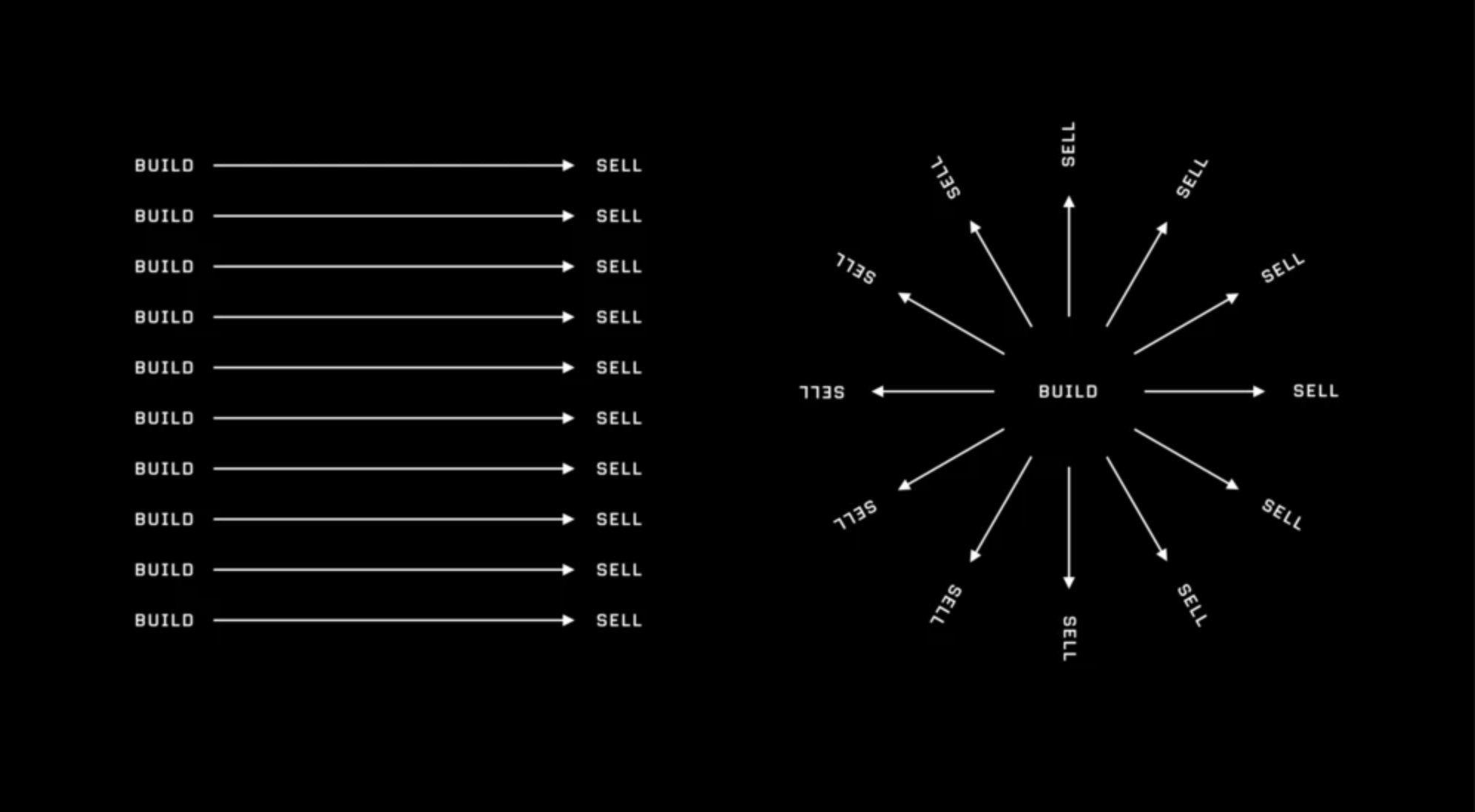Earlier this year, I got more active on Twitter after several quiet years.
Then something interesting started to happen. Every few weeks, I'd get an invitation to appear as a guest on a podcast.
The invites came from aspirants like Danny Miranda and Ari Lewis, as well as established hosts like David Perell and Anthony "Pomp" Pompliano. My Twitter following was still fairly small. But somehow my activity sent out a Bat Signal to these prolific podcasters.
Full disclosure, I don't listen to many podcasts. When my Airpods go in, I default to music. Between daily doses of the Grateful Dead and Phish, and time to discover new music, my listening hours are stretched thin.
And yet I happily accepted these podcast invitations. The interest flattered me, of course. I relished the opportunity to chat with the hosts, each of them high performing operators and creators in their own right. The interviews required minimal commitment. Just a bit of prep followed by an hour or so of live chat time from the comfort of my home office. And my participation came with the added benefit of a boost to the old personal brand.
What's wasn't to like?
As I saw the creators atomize and remix our discussions across various media, I realized something. My loquaciousness had become raw material for a tried and true content strategy. The cornerstone of content marketing. A proven editorial tactic. And the audience growth fuel for many one-person media brands in the exploding creator economy.
In my time in media, I've implemented variations on this framework plenty of times. That said, it's one thing to practice content strategy. It's quite another to become willing fodder for it.
While the approach felt familiar, I couldn't place the terminology. Naturally, I asked Twitter. To no surprise, Twitter had answers.
Is there a name for the content strategy where a creator starts with an interview podcast and then chops it up and repurposes it into a bunch of derivative clips, articles, tweets, etc?
— Dave Nemetz (@davenemetz) December 15, 2020
The volume and variety of replies illustrates that this strategy is ubiquitous yet undefined.
Brandon Wenerd from BroBible calls it "the content factory." Erik Jacobson, CEO of LemonpieFM and host of Brands That Podcast, uses the term "1 to 20". As in, one piece of content becomes twenty.
The lion's share of mentions gave credit to the ubiquitous and polarizing Gary Vaynerchuk and his "Garyvee Content Model" for popularizing the approach.
Gary V is something of a Rorsach test for media people. Some rankle at his relentless self-promotion and hyping of hustle culture. Others can't help but admire him for those same reasons.
As they say: don't hate the player, hate the game. When it comes to this game, Vaynerchuk has mastered it.
Absent a universal name for this framework, I'm calling it "the inverted curiosity pyramid."
How the inverted curiosity pyramid works

Start with curiosity
Curiosity should drive every creator or media brand. Use that curiosity as a lens. Filter the world for interesting people with unique knowledge about your subject area.
Secure interviews by enthusiastically demonstrating the overlap between your curiosity and their expertise. Interviewing guests with a large following helps to amplify signal. But it isn't necessary if you execute the rest of the process well.
The key is to find people who have interesting, noteworthy, and newsworthy things to say about your chosen topics. Then to employ curiosity to draw those insights out of them.
Create a longform piece of "anchor content"
These days, the anchor most often takes the form of an interview podcast. But it could also be a longform article or another format. For our purposes, we'll assume it's a podcast.
David Perell has an excellent play by play of his podcast strategy. He explains the nuts and bolts of how to execute this down to the most minute details.
If you're recording a podcast, you should capture video as well as audio. This is easy enough to do for remote interviews, with programs like Skype, Zoom, or Riverside.fm. Descript is a great tool for editing and generating transcripts. This way, you can chop up and remix your anchor content in as many mediums as possible.
The podcast serves as the canonical work from which you will then derive many other pieces of content. You'll want it to cover a lot of ground and create as many quotable and shareable insights as possible.
The goal here is to maximize leverage from this singular effort.
Chop your anchor content up into "micro-content"
Now, take out your splicer and create as many standalone pieces as you can from the anchor content.
Remember Jacobson's "1 to 20" terminology. Micro-content can include show notes, breakout articles, newsletters, and shorter audio/video clips. They should serve as teasers for the longform piece. But they also must stand on their own as unique content items.

Creative director and founder of Visualize Value Jack Butcher has created a cottage industry around his mantra of "Build once, sell twice". This should be your mindset in this step. You've already done the hard work of creating an in-depth original work. To get the most value from it, you need to break it apart into as many snackable chunks as you can.
This is how content creation becomes scalable.
Next, turn that "micro-content" into "nano-content"
What's smaller than micro? Nano, my friends.
Step four is an extension of step three, only smaller. Instead of articles and video clips, the focus here is on social media.
First, pull the most interesting quotes and insights from the interview. Then package and share them on Twitter, Facebook, or whatever your preferred social platform du jour happens to be.
Your guests will most likely amplify your efforts by sharing your micro- and nano-content to their feeds. This increases the signal for the anchor content and builds your brand. If you play your cards right, you'll draw in new audience as well as attract the attention of potential new interviewees.
The cycle of curiosity continues.
The inverted curiosity pyramid is incredibly efficient. It systematizes the creation of original content and new ideas. Then ensures these efforts are repeatable and scalable.
Software and processes can automate much of the busy work. Sean McCabe even spun up a service called Daily Content Machine that will execute parts of this strategy for you.
Are there limitations? Sure. The more people who run this playbook, the harder it becomes to stand out. As more anchor content and micro-content gets created, the competition for finite audience attention intensifies.
I've also noticed that many of these podcasts feature similar guest rosters. The Twitter echo chamber plays a big role in this. As more and more creators run the playbook, originality requires deeper curiosity.
But the internet abounds with endless niches. That's the beauty of it. Choose the right niche to point your curiosity towards, and those shortcomings disappear.
There's a bigger question of whether this is a framework or a growth hack. Growth hacks live fleeting lives. Once the word gets out, the hack stops working. Frameworks persist. They evolve and adapt as distribution channels and content formats change.
The inverted curiosity pyramid is a road-tested framework that will stand the test of time. It will live on as long as there are new niches to cover, and willing participants to play the game and amplify the results.
In other words, likely forever.



